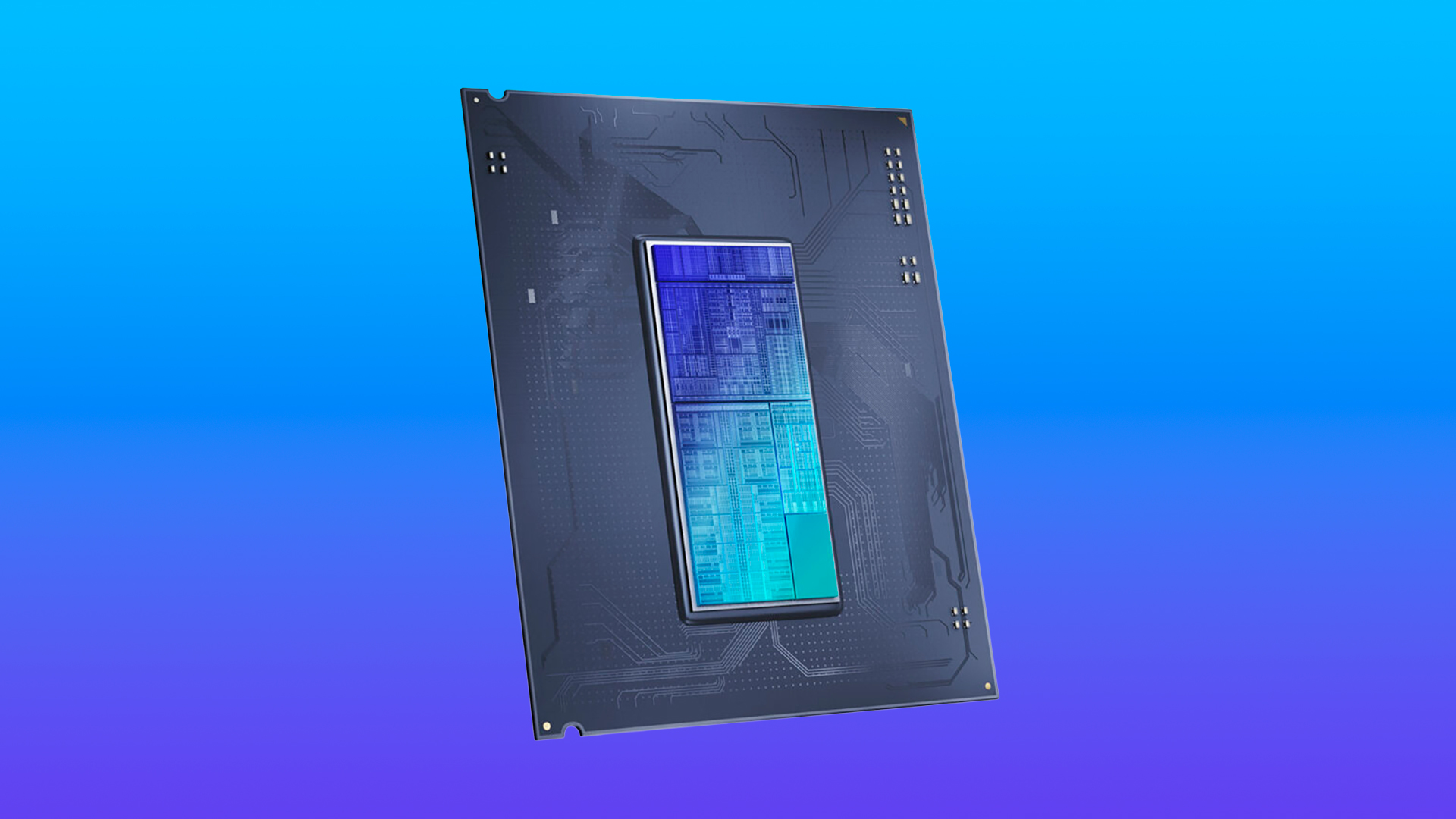Core Ultra 3 205 flaunts 30% higher multi-core performance over Core i3-14100 in early benchmarks — extra E-cores seemingly contribute to uplift
Intel's newest entry-level Arrow Lake-S chip is benefiting a lot from its four extra E-cores

Performance benchmarks surrounding Intel's upcoming entry-level Core Ultra 3 205 have surfaced, showing considerable multi-core improvements over Intel's current-gen Core i3. Spotted by Benchleaks on X, the new eight-core Arrow Lake-S CPU delivers 30% superior multi-core performance compared to the Core i3-14100 in Geekbench 6.
Benchleaks discovered two Geekbench 6 listings. One boasts a single-core result of 2,664 points and a multi-core result of 9,935 points. The other features a single-core score of 2,635 points and a multi-core score of 9,767 points.
The two Core Ultra 3 205 benchmark scores demonstrate a huge multi-core performance boost over its predecessor, the Core i3-14100. The Core Ultra 3 205 is 11% faster in single-core and 30% faster in multi-core, achieving 2,394 points and 7,666 points, respectively, in Geekbench 6's single- and multi-core tests.
Core Ultra 3 205 Benchmarks
CPUs | Single-Core | Multi-Core |
|---|---|---|
Core Ultra 3 205 (highest score) | 2,664 | 9,935 |
Core i3-14100 | 2,394 | 7,666 |
Core i5-14400 | 2,345 | 10,830 |
Core Ultra 5 225F | 2,653 | 13,028 |
Ryzen 5 7600 | 2,749 | 12,230 |
The extra performance can be attributed to not only Intel's newer Arrow Lake architecture, but also the inclusion of four additional Skymount E-cores. The Core Ultra 3 205 is Intel's first entry-level eight-core CPU, sporting four Lion Cove P-Cores and four Skymont E-cores. Technically, both the 205 and i3-14100 have eight threads; however, the 205 forgoes Hyper-Threading due to design changes in the Arrow Lake architecture.
Despite these advances, the Core Ultra 3 205 might struggle in the entry-level CPU market. The revealed overseas pricing appears to be $150, and assuming launch-day pricing adheres to this price, the 205 will likely compete directly with older mid-range parts from AMD and Intel.
Chips like AMD's Ryzen 5 7600 and even Intel's previous-generation Core i5-14400 are regularly discounted to around $150 but feature superior multi-core performance, at least in Geekbench. For example, the Ryzen 5 7600 is a two-generation-old six-core part from AMD, yet the chip boasts a multi-core score of 12,230 points, 23% higher than the Ultra 3 part.
Worse still, the Core Ultra 3 205 will also have to contend with Arrow Lake's gaming performance regressions compared to Raptor Lake (and Raptor Lake Refresh). Gaming is a big part of the entry-level PC market, and this will make previous-generation mid-range parts from AMD and Intel even more competitive against the 205.
Get Tom's Hardware's best news and in-depth reviews, straight to your inbox.
Follow Tom's Hardware on Google News, or add us as a preferred source, to get our up-to-date news, analysis, and reviews in your feeds. Make sure to click the Follow button!

Aaron Klotz is a contributing writer for Tom’s Hardware, covering news related to computer hardware such as CPUs, and graphics cards.
-
usertests Good CPU that will end up in dirt cheap prebuilts (on clearance).Reply
The iGPU is likely only 2 Xe cores (of 4), so I guess that's around UHD 770. -
ezst036 These companies never learn, but I hope this time Intel doesn't overplay its hand given its market weaknesses. What they normally do is cherry pick one single thing and often times, nobody can even reproduce it.Reply
The companies, Intel should instead do a wide benchmark across many points and make sure above all that it is reproducible. If Intel does that it will be helpful in signifying that they are turning the corner. At least in one aspect. And yes, its an important one. -
rluker5 Going to be a hard sell vs the $150 14600k : https://browser.geekbench.com/processors/intel-core-i5-14600kwhich wins in single and +50% multi.Reply
Seriously one of the best CPU deals in years. -
usertests Reply
I think most 205s are going to be sold in cheap prebuilts/AIOs for Grandma. Nice CPU uplift over similar 12100/13100/14100 systems, also faster than UHD 730 graphics.rluker5 said:Going to be a hard sell vs the $150 14600k : https://browser.geekbench.com/processors/intel-core-i5-14600kwhich wins in single and +50% multi.
Seriously one of the best CPU deals in years. -
Amdlova I have a 13100T works great maxed out the 6700xt no problems... some games need more coreeeeeees powa.Reply
but for 99% will be great for a budget systems.
And intel made a new cpu for a dead platform :S holly S. -
bit_user Reply
Except Geekbench's multicore score is garbage. It doesn't mean what you think it does and has little to do with the number of cores.adamXpeter said:So doubling the number of cores yields better multicore score ...
People simply shouldn't use it. Its name suggests it's a synthetic multi-core score, like Cinebench. But, it's really designed to be more of a "typical application benchmark", like PC Mark or whatever.
Geekbench MT is sometimes more sensitive to differences in memory configuration than even core count. -
TerryLaze Reply
Yes people, for heavens sake don't use a benchmark that actually shows you how much performance you as a home owner will get out of your system, only look at server benchmarks.bit_user said:Except Geekbench's multicore score is garbage. It doesn't mean what you think it does and has little to do with the number of cores.
People simply shouldn't use it. Its name suggests it's a synthetic multi-core score, like Cinebench. But, it's really designed to be more of a "typical application benchmark", like PC Mark or whatever.
Geekbench MT is sometimes more sensitive to differences in memory configuration than even core count.
Geekbench launches one task that uses all cores instead of running something that can break up its work into individual parts that don't need anything from any other part.
It will not show you how good of an server CPU you have so why in the world would you ever even look at it?!
(Emphasis by me)
https://www.geekbench.com/doc/geekbench6-benchmark-internals.pdfMulti-ThreadingGeekbench 6 uses a “shared task” model for multi-threading, rather than the “separate task” model used in earlier versions of Geekbench. The “shared task” approach better models how most applications use multiple cores. The "separate task" approach used in Geekbench 5 parallelizes workloads by treating each thread as separate. Each thread processes a separate independent task.
This approach scales well as there is very little thread-to-thread communication, and the available work scales with the number of threads.
For example, a four-core system will have four copies, while a 64-coresystem will have 64 copies. The "shared task" approach parallelizes workloads by having each thread processes part of a larger shared task. Given the increased inter-thread communication required to coordinate the work between threads, this approach may not scale as well as the "separate task" approach. -
bit_user Reply
I have no problem with benchmarks that are clearly advertised to measure typical application performance.TerryLaze said:Yes people, for heavens sake don't use a benchmark that actually shows you how much performance you as a home owner will get out of your system, only look at server benchmarks.
The issue I have is with a synthetic benchmark that claims to measure "Multithreaded performance". People expect such benchmarks to scale will with the number of cores. Geekbench MT doesn't, because they explicitly designed it not to!
Taking that statement out of context is misleading. The intent of that excerpt is to contrast itself to "shared-nothing" benchmarks, like SPEC_rate=n, which is fair. They're not saying all parts of GB6 MT use all cores. If it did, then the result shown for the Intel Core Ultra 3 205 would mean it's a trash CPU, and I'm sure you don't think that!TerryLaze said:Geekbench launches one task that uses all cores instead of running something that can break up its work into individual parts
If you actually read that doc, they go on to describe how the MT benchmark is a mix of heavy and lightly-threaded tasks, because their intent was not to measure how well a system scales to all-core workloads, but rather to be more of a "typical MT application" benchmark.
People look to MT benchmarks as a guide of all-core performance, because there are lots of things that actually people do (like compiling code) on client CPUs that use those cores. Otherwise, why would client CPUs have so many cores and why would anyone buy them?TerryLaze said:It will not show you how good of an server CPU you have so why in the world would you ever even look at it?! -
TerryLaze Reply
That's confirmation bias, people that are normal people and don't have a 30+ year history of working with PCs expect a benchmark to tell them how much performance they might get out of one CPU compared to another.bit_user said:I have no problem with benchmarks that are clearly advertised to measure typical application performance.
The issue I have is with a synthetic benchmark that claims to measure "Multithreaded performance". People expect such benchmarks to scale will with the number of cores. Geekbench MT doesn't, because they explicitly designed it not to!
What year do you live in?!?bit_user said:People look to MT benchmarks as a guide of all-core performance, because there are lots of things that actually people do (like compiling code) on client CPUs that use those cores. Otherwise, why would client CPUs have so many cores and why would anyone buy them?
Have you ever seen an average "client CPUs" desktop in action?
They need that many cores just for all the web adds and bloatware alone.